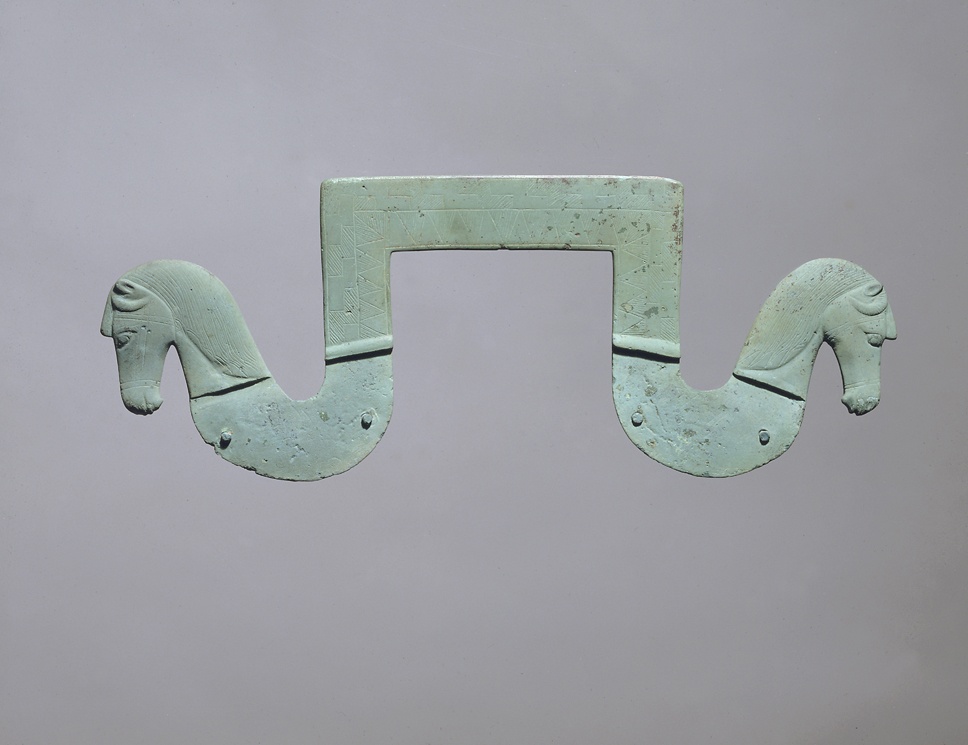
Bronze
W: 20.2 cm
Allegedly from Greece
Thessalian?
c. 600 B.C.
Solid-cast by the lost wax process, chased and engraved in the cold.
Condition: the four rivets still in place. Light green patina.
This handle with two horse protomes was one of a pair. Originally, the fairly flat dish of hammered bronze sheet would have measured roughly 57 cm in diameter.
Such dishes were probably made in different workshops, located in Athens, Corinth, Argos and Sparta [1]. The closest parallel for our handle is one dated in the Proto-Corinthian period and found in the Argive Heraeum [2], together with many votive dishes. The hatching and ground are for all intents and purposes identical on both pieces, as are the four rivet holes.
However, the gentler curve of the horse protomes and their outlines with the more evolved manes and less stylized eyes, suggest that this is a later imitation, product of a Thessalian workshop.
1 Jantzen, U.: Griechische Bronzeteller, AM 63/64, 1938/39, p. 154.
2 Athens, National Museum 14027: Jantzen, U.: op. cit.,
no. 12, p. 143.